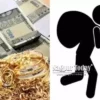
The disgraced crypto king, on trial for financial fraud, takes the stand. But his hair tells its own story.
Imagine if Sam Bankman-Fried, the founder of the crypto trading firm FTX and defendant in one of the largest financial fraud trials in history, was actually named Samson, rather than Samuel. Like the biblical character, Mr. Bankman-Fried’s symbolic shearing for his courtroom appearance may become a fabled reflection of promise brought low in the tales to come of our digital age.
As Mr. Bankman-Fried took the stand on Friday in federal court in Manhattan to begin testifying in his own defense — to explain his actions as having been made in good faith, even if they had bad results — it was hard not to think that his newly cropped do, created by a fellow jail inmate, according to a person familiar with the situation, and paired with a subdued gray suit, white shirt and purple tie, wasn’t just a dress code choice, but a metaphor. An apologia writ in hair about what happens when a muscular intellect is married to frail corporate governance.
Why not? Everyone (or every juror) can see a hairdo and relate. Cryptocurrency, not so much.
Besides, from the beginning it was by Mr. Bankman-Fried’s hair that so many knew him. The wild halo of dark curls that looked as if it had never met a brush and, according to Michael Lewis in “Going Infinite,” his new book about Mr. Bankman-Fried and FTX, resembled “the hairdo of a lunatic.” The hair that suggested Einstein, electric sockets and some sort of giant brain underneath.
The hair that, along with the wrinkled cargo shorts and T-shirts that were Mr. Bankman-Fried’s everyday uniform, suggested “the ultimate billionaire white boy tech flex: I’m so above convention,” as Scott Galloway, an investor, podcast host and professor of marketing, once told The New York Times.
The hair that played into all of our subconscious associations about tech world geniuses whose move-fast-and-break-things ethos could not be constrained by old rules about personal hygiene and professional wardrobe because … hey! they clearly knew things we do not.
But now the hair is no more. Instead, Mr. Bankman-Fried has the coiffure of a mathletics kid. With his new look, the defendant, otherwise housed in the Metropolitan Detention Center in Brooklyn and reduced to wearing a jail jumpsuit, models one of three suits and one of four dress shirts bought on his behalf on sale at Macy’s for trial purposes after agreement from the judge. (Given the FTX bankruptcy, there is a limited budget.) Also, Rockports, the kind that slide on and don’t involve shoelaces — since you can’t have shoelaces in prison — and one of three ties lent by an acquaintance.
The new outfits are not exactly a surprise. The Supreme Court found in 1976, in Estelle v. Williams, that defendants have a right not to appear in identifiable prison clothes during a trial, because they could prejudice a jury. (They can make the defendant look guilty.) Though there is no dress code for this federal court, tradition has it that defendants should look respectful of the venue: that is, wear a suit and tie.
Even Mr. Bankman-Fried knows this, despite his penchant for generally rejecting the suit and tie. According to Mr. Lewis’s book, he even owned what he called a “D.C. suit,” worn to testify before Congress and meet Senator Mitch McConnell, and he had worn a suit in earlier courtroom appearances. Indeed, he was wearing said suit when he was taken to jail, but at some point the pants disappeared, according to a person familiar with the case, which is why he needed new clothes.
Still, even during those previous besuited appearances, Mr. Bankman-Fried’s hair had remained its wild self. Which is why the cut was so striking. In the wake of his enforced silence before his testimony, it seemed like a statement of — something.
Without the hair, in his playing-by-the-rules get-up, Mr. Bankman-Fried seems kind of … average. This guy — a criminal mastermind? Look at him! He looks like the nerd next door. He clearly did not intend to defraud his investors. He is trying hard to obey the rules. He’s going to, in the words of the George Thorogood song, “get a haircut and get a real job.”
Even in courtroom sketches, the only visual record of the trial because the judge does not allow cameras in the courtroom, the just-like-us transformation comes through. (Mr. Bankman-Fried, transported from jail, enters and leaves the court building through a back door, so there are also no photographs of him arriving at court.)
That possibility could not have escaped Mr. Bankman-Fried, who despite his general obliviousness to appearance, seems to have been quite aware of the role his hair played in his myth.
Caroline Ellison, a government witness and the former chief executive of Alameda Research (the trading arm of Mr. Bankman-Fried’s empire) and Mr. Bankman-Fried’s former girlfriend, testified in court that “he said he thought his hair had been very valuable.” Ever since an early job at the Wall Street firm Jane Street, Ms. Ellison testified, “he thought he had gotten higher bonuses because of his hair and that it was an important part of FTX’s narrative and image.”
(It is possible to see Ms. Ellison as the Delilah of this particular story. Not just because of her personal relationship with Mr. Bankman-Fried, but because, in her testimony, she may not have cut his locks herself, but she certainly cut him down to size.)
Other FTX employees apparently thought his hair was important enough to him, Mr. Lewis writes, that when they were working with the architects hired to design the new headquarters in the Bahamas and imagining what he would want, one of only three things they came up with was that the side of the building “evoke his unruly hair.”
Mr. Lewis also writes that Mr. Bankman-Fried admitted having “general disdain” for the importance of “physical attractiveness.” When he landed on the Forbes billionaires list, that disdain looked like strength: It meant he was focused on his big ideas. Later, of course, it looked like a warning sign: If he was that careless with his own appearance, maybe he was that careless with your money. But either way, the interpretation was in the eye of the beholder.
Is it his fault we were silly enough to fall for the look and the windfall we thought it promised? After Elizabeth Holmes and her black turtleneck, we should have known better. Yet, as Anthony Scaramucci, who bought Mr. Bankman-Fried a suit when he took him on a fund-raising trip to the Middle East weeks before FTX’s implosion, told Business Insider, he thought Mr. Bankman-Fried “was the Mark Zuckerberg of crypto.” And Mr. Scaramucci thought that, Insider wrote, because “the Meta C.E.O. walked around Davos in a hoodie and T-shirt,” and Mr. Bankman-Fried walked around all the time in wrinkled cargo shorts and a T-shirt.
But then came the comeuppance and then came the haircut.
Shearing hair has long been a means of punishment for men and women. Hair, and all the ways we manipulate it, is so connected to identity — to sexual allure, health and self-expression — that it is illegal to discriminate on the basis of hair in 23 states. Precisely because of that, its cutting can represent dehumanization, as it did during World War II when the French shaved the heads of collaborators, and as it does, partly, in the prison system. In many religions, the sacrifice of hair can signal penitence.
Maybe that was part of Mr. Bankman-Fried’s thinking, too. Maybe cutting his hair was a way for him to show the jury, as he sat there silently, day after day, while the prosecution presented its case, that, as his defense goes, he really didn’t mean for anything bad to happen. He is sorry for anyone he unwittingly hurt. He knows no one is above the law. Indeed, he has already begun to punish himself for his mistakes and to atone. And, besides, if we fell for the hair, we have ourselves to blame.
Will it work? We will have to wait and see. In the meantime, perhaps the lesson of the parable of the hair is as much for us as it is for him: Beware of what Mr. Galloway called “the idolatry of innovators.” They may have feet of clay. Or follicles, perhaps.
David Yaffe-Bellany contributed reporting.
This post was originally published on this site be sure to check out more of their content.







